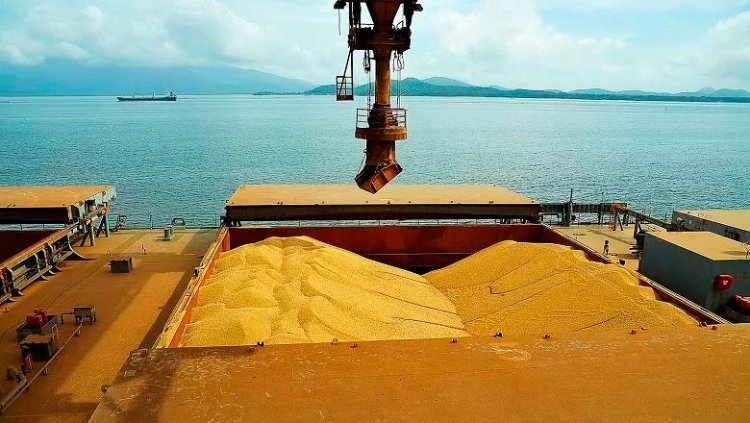Brazil is taking part in the sales of soybeans from the United States, which has lost competitiveness in the global market due to the unprecedented drought affecting the Mississippi River and the high dollar.
The low water level of the river, which paralyzes ships on the path of U.S. soybeans to the Gulf, has raised the U.S. export price, directing some of the Chinese demand to Brazil.
China bought six ships of soybeans for shipment in November, half from Brazil and half from the U.S., according to Arlan Suderman, chief economist for commodities at StoneX.

Historically, China would be buying almost exclusively from the U.S., which usually has cheaper soybeans due to the harvest period.
The atypical movement may reduce U.S. exports and increase U.S. inventories, contributing to a bearish scenario for soybean futures prices on the Chicago Board of Trade, a system already drawn by weaker demand from China this year and the expectation of a record harvest in Brazil starting in January next year.
“The U.S. is missing the opportunity to sell as much as it can before Brazil’s harvest – and all signs so far point to a Brazilian record crop,” said Victor Martins, senior risk manager at HedgePoint Global Markets.
The outlook for U.S. sales could get worse. If U.S. producers take too long to sell, importers may cancel their purchases from the U.S. and opt for Brazil, according to Doug Houghton, an analyst at Brock Associates in Milwaukee.
U.S. soybean shipments for the 2022-23 season, which began Sept. 1, are down 19 percent from last year. Another factor is hurting U.S. exports in Argentina.
At least 8 million tons of soybeans were sold within days by Argentine exporters after the local government allowed farmers to receive a better exchange rate.
“Argentina basically ‘came out of nowhere in this market and dumped a lot of ‘cheap’ soybeans bought by China,” Suderman said.
Argentine soybeans, which will arrive in China by January, have supplied virtually all of the country’s demand through December.
Now the question is who will provide the most significant global importer from then on.
“Both Brazil and the U.S. have soybeans to export, which will define the price,” Martins said. According to Daniele Siqueira, an analyst at AgRural, Brazilian producers still have about 16 million tons of the 2021-22 crop to sell.
Meanwhile, China is guaranteeing cargoes from the U.S. for unloading in Asia in February next year.
This is a possible hedge if the Brazilian crop is not as abundant as expected.
A drought in December last year reduced the country’s production to the lowest level since the 2018-19 crop.
Last week, China booked 13 U.S. cargoes for shipment in December and January, according to several market sources.
With information from Bloomberginlinea

